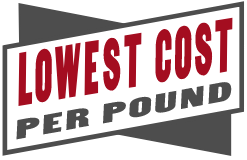
When you drive the same car for years and years the financial impact of increasing gas prices is blatantly obvious. When I bought my Subaru about 5 years ago the cost to fill the tank was less than $30. Yesterday when I rolled into a gas station with the needle on ‘E’ it cost me $43--and I live in a state where prices are still below the national average of $3.68/gallon (4/5/11) for regular unleaded. No matter how you get from point A to point B, you’re probably feeling the pinch of rising fuel costs, and with the travel months of summer right around the corner it’s only expected that prices will keep heading up. But rather than get into the economics of why prices are increasing and inflation is on the rise let’s instead look at what other countries in the world are paying for fuel, and then consider some very basic adjustments we can all make in order to get the most out of the small fortunes we spend at the pump.According to survey information gathered by Associates for International Research, (AIRINC), a Massachusetts based research firm, many European countries pay at least double, and in a few cases nearly triple the price that Americans pay for a gallon of gasoline.Cities Worldwide with the Highest Gasoline Prices (March 2011)
| City, Country |
Price Per Gallon Regular in USD |
| Istanbul, Turkey |
$9.63 |
| Asmara, Eritrea |
$9.59 |
| Oslo, Norway |
$9.27 |
| Athens, Greece |
$8.50 |
| Monte Carlo, Monaco |
$8.45 |
| Copenhagen, Denmark |
$8.42 |
| Stockholm, Sweden |
$8.18 |
| Brussels, Belgium |
$8.17 |
| London, UK |
$8.17 |
| Amsterdam, Netherlands |
$8.01 |
|
|
The highest recorded average gasoline price in the United States was $4.11 in July 2008. That’s higher than they are today, and proof that prices may still go down before they go up again. So are you feeling better about $3.66 per gallon?
Gas Saving TipsThe
Federal Trade Commission and the
US Department of Energy both offer guide lines for improving gas mileage. This probably isn’t breaking news to most people, but since gas prices are not likely to ever return to historically low levels it’s good to do what we can do in order to get the best gas mileage possible given the prices at the pump. Whether you’re paying under $4 a gallon in the US or over $8 in the Netherlands, most developed countries around the world offer the same set of recommendations, which include: • Driving more efficiently by traveling at consistent speeds, observing speed limits, removing weight, and keeping roof racks off the top of your vehicle when not in use.• Performing routine maintenance like keeping your engine tuned, regularly checking tire pressure and keeping them at appropriate PSI levels, and getting regularly scheduled oil changes. • Being consumer wise and understanding that high-octane fuel is not necessary for most vehicles, and that there are lots of ‘gas saving’ gimmicks that actually offer no benefit whatsoever.
Fuel in an EmergencyBecause gasoline can’t be stored long term, you might not think about adding it to your
survival gear. But regardless of where gas prices head in the future, it’s not a bad idea to keep a reserve gas can on hand. In addition to the small amount I keep in the summer for my lawnmower and weed whip, I regularly fill and use a larger container that I pour into my car every four weeks. Then I head to the gas station and refill it so I always have a fresh supply. It’s not much, but it would help if there’s a shortage, and it would be enough fuel to run my generator for a few days.For daily updates on average gas prices check out the
AAA Daily Fuel Gauge Report.---Jared Matkin---Jared Matkin is a Salt Lake City based freelance writer and outdoor enthusiast who is continually on the lookout for innovative and usable products designed to help improve the way we live.

 When you drive the same car for years and years the financial impact of increasing gas prices is blatantly obvious. When I bought my Subaru about 5 years ago the cost to fill the tank was less than $30. Yesterday when I rolled into a gas station with the needle on ‘E’ it cost me $43--and I live in a state where prices are still below the national average of $3.68/gallon (4/5/11) for regular unleaded. No matter how you get from point A to point B, you’re probably feeling the pinch of rising fuel costs, and with the travel months of summer right around the corner it’s only expected that prices will keep heading up. But rather than get into the economics of why prices are increasing and inflation is on the rise let’s instead look at what other countries in the world are paying for fuel, and then consider some very basic adjustments we can all make in order to get the most out of the small fortunes we spend at the pump.According to survey information gathered by Associates for International Research, (AIRINC), a Massachusetts based research firm, many European countries pay at least double, and in a few cases nearly triple the price that Americans pay for a gallon of gasoline.Cities Worldwide with the Highest Gasoline Prices (March 2011)
When you drive the same car for years and years the financial impact of increasing gas prices is blatantly obvious. When I bought my Subaru about 5 years ago the cost to fill the tank was less than $30. Yesterday when I rolled into a gas station with the needle on ‘E’ it cost me $43--and I live in a state where prices are still below the national average of $3.68/gallon (4/5/11) for regular unleaded. No matter how you get from point A to point B, you’re probably feeling the pinch of rising fuel costs, and with the travel months of summer right around the corner it’s only expected that prices will keep heading up. But rather than get into the economics of why prices are increasing and inflation is on the rise let’s instead look at what other countries in the world are paying for fuel, and then consider some very basic adjustments we can all make in order to get the most out of the small fortunes we spend at the pump.According to survey information gathered by Associates for International Research, (AIRINC), a Massachusetts based research firm, many European countries pay at least double, and in a few cases nearly triple the price that Americans pay for a gallon of gasoline.Cities Worldwide with the Highest Gasoline Prices (March 2011)








